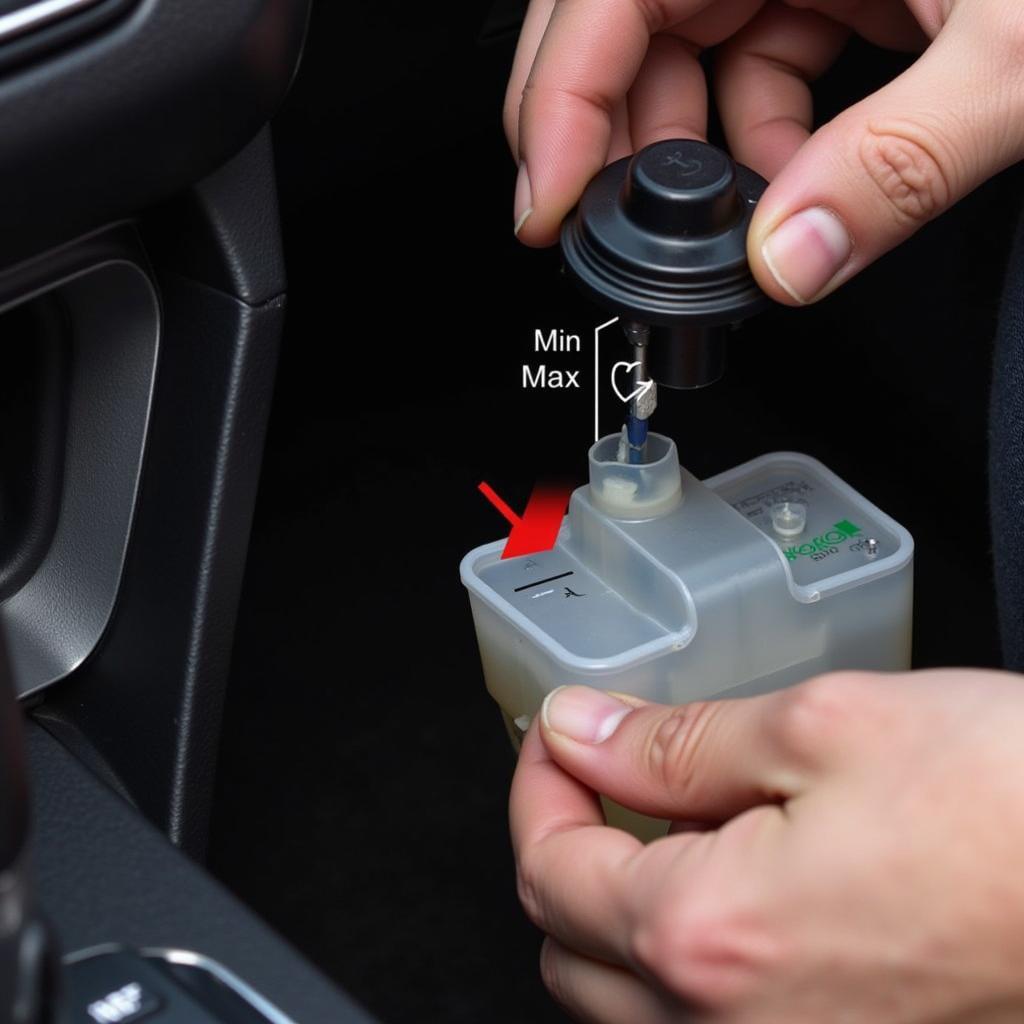Your car has power, the lights work, the radio plays, but when you turn the key, nothing happens. This frustrating “car has power but no crank” scenario can leave you stranded and searching for answers. This guide will walk you through the common causes and solutions, from simple checks to more complex diagnostic procedures.
If your car battery is dead, it may seem like your car has power because the lights and radio still function. However, there may not be enough power to crank the engine. Similarly, a bad car battery can also be the culprit.
Understanding the “No Crank” Condition
A “no crank” condition means your engine isn’t even attempting to turn over when you turn the key. This differs from a “no start” condition where the engine cranks but fails to fire up. Pinpointing this difference is the first step in your diagnostic journey. The “car has power but no crank” situation indicates a problem in the starting system, not necessarily the fuel or ignition systems.
Common Culprits Behind a No Crank
Several components can cause this issue. Let’s break down the most common culprits:
- Dead or Weak Battery: While your car might have enough juice to power accessories, the battery might lack the necessary amperage to engage the starter motor.
- Faulty Starter: The starter motor is responsible for cranking the engine. If it’s faulty, it won’t engage, even with a good battery.
- Ignition Switch Problems: The ignition switch sends the signal to activate the starter. A malfunctioning switch can prevent this signal from reaching the starter. A new ignition switch car won’t start if it is not properly installed.
- Neutral Safety Switch Malfunction: This safety feature prevents the car from starting unless it’s in park or neutral. A faulty switch can lead to a no-crank condition.
- Wiring Issues: Corroded or loose connections in the starting circuit can interrupt the flow of power to the starter.
- Fuses and Relays: A blown fuse or a faulty relay in the starting circuit can prevent the starter from receiving power.
Troubleshooting Your Car’s No Crank Problem
Here’s a step-by-step guide to help you troubleshoot the “car has power but no crank” issue:
- Check the Battery: Begin by testing your battery voltage. It should read around 12.6 volts. If it’s significantly lower, your battery may need a charge or replacement.
- Inspect Battery Connections: Ensure the battery terminals are clean and tightly connected. Corrosion can hinder current flow.
- Test the Starter: You can use a multimeter or a test light to check for power at the starter solenoid when the key is turned to the “start” position.
- Inspect the Ignition Switch: If the starter doesn’t receive power, the ignition switch might be faulty.
- Check the Neutral Safety Switch: Try shifting the gear lever to neutral and attempting to start the car. If it starts, the neutral safety switch likely needs replacement.
- Examine Wiring and Connections: Trace the wiring from the battery to the starter, looking for any loose, corroded, or damaged wires.
Expert Insights
“A common mistake people make is assuming a dead battery when their car won’t crank,” says automotive expert John Smith, ASE Certified Master Technician. “While a dead battery is a frequent culprit, other issues like a faulty starter or wiring problems can mimic the symptoms.”
Another expert, Sarah Johnson, an electrical systems specialist with over 20 years of experience, adds, “Don’t overlook the simple things like corroded battery terminals or a blown fuse. These often-overlooked issues can be the root of the problem.”
Conclusion
A car that has power but won’t crank can be a perplexing problem. If your car won’t start and no power is present at all, that points to a different issue entirely. However, by systematically checking the key components mentioned in this guide, you can often diagnose and resolve the issue yourself. If the problem persists, consult a qualified mechanic for a car completely dead with no power, as professional help may be necessary.
FAQ
- Can a bad alternator cause a no-crank condition? Generally, no. A bad alternator will drain the battery over time, eventually leading to a no-crank situation, but it won’t directly cause the immediate no-crank issue.
- What if I hear a clicking sound when I try to start the car? A clicking sound often indicates a weak battery or a faulty starter solenoid.
- Can extreme cold weather cause a no-crank problem? Yes, cold weather can thicken engine oil and make it harder for the starter to crank the engine. It can also weaken a battery.
- My car started intermittently and now won’t crank at all. What could be wrong? This might suggest a failing starter, a loose connection, or a faulty ignition switch.
- Is it safe to jump-start a car with a no-crank condition? Yes, but ensure the other car’s battery has the same voltage and that the cables are connected correctly.
- Should I replace the starter myself? Replacing a starter can be a challenging DIY project. If you’re not comfortable working on your car, it’s best to consult a mechanic.
- My car has power, but the starter won’t engage. What’s next? If you’ve checked the battery, connections, and fuses, it’s likely a problem with the starter itself, the ignition switch, or the wiring in between.

